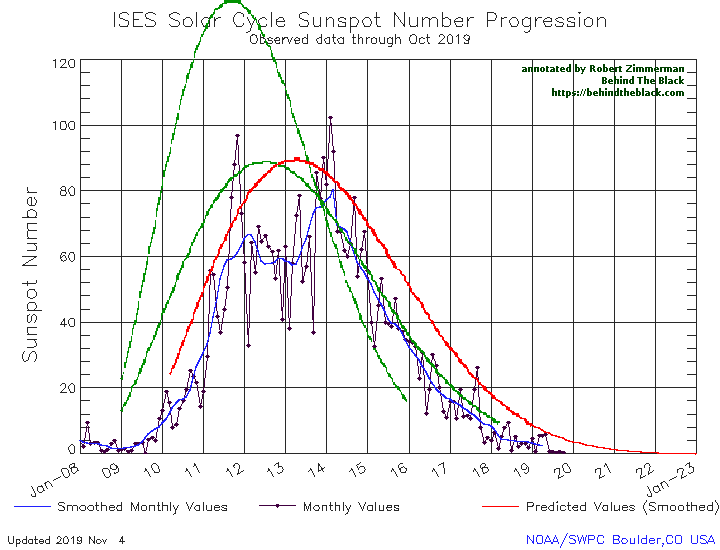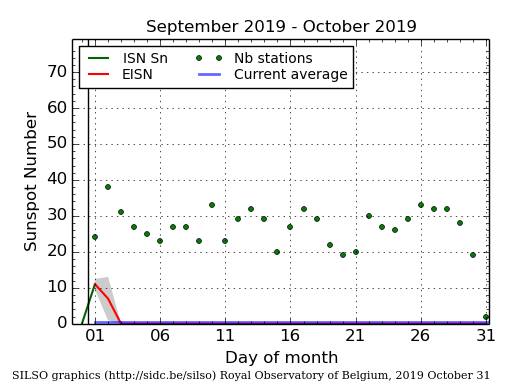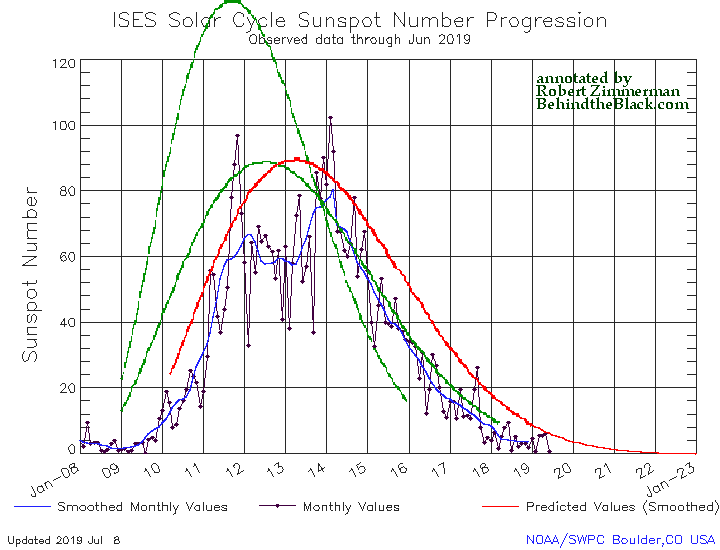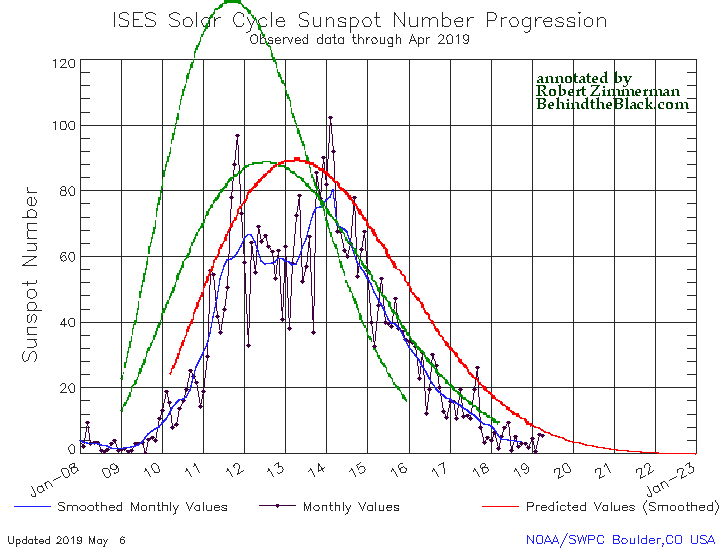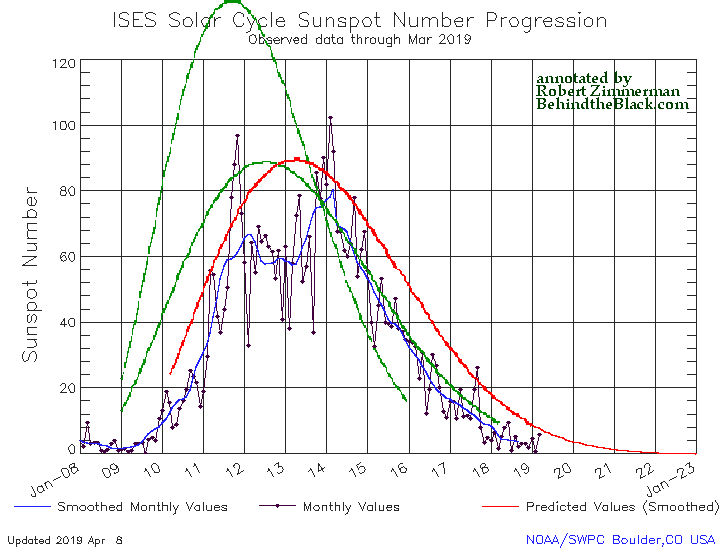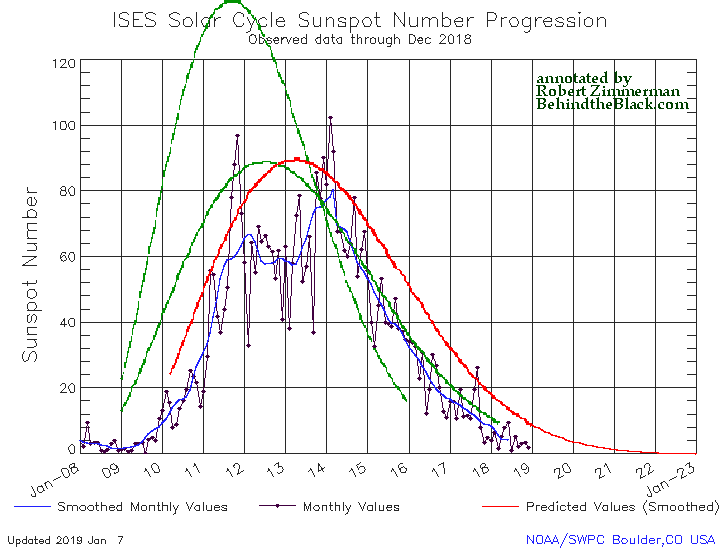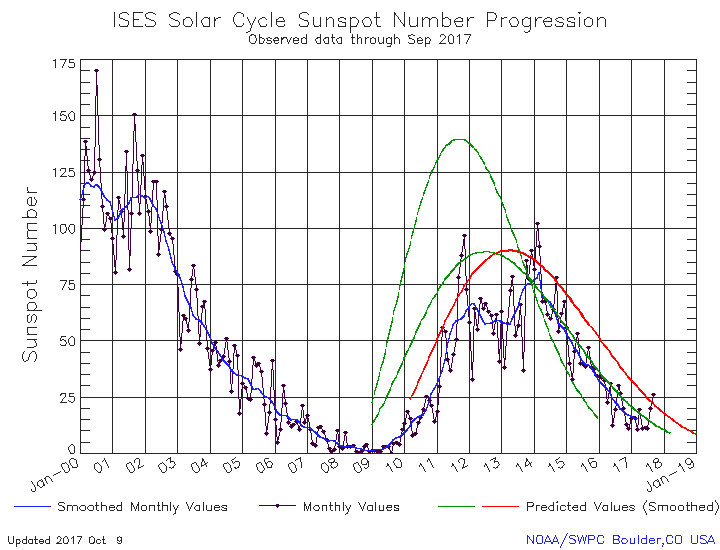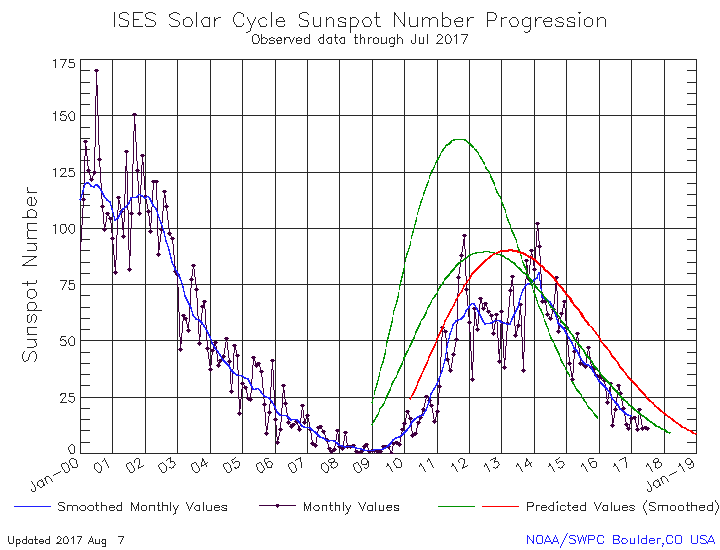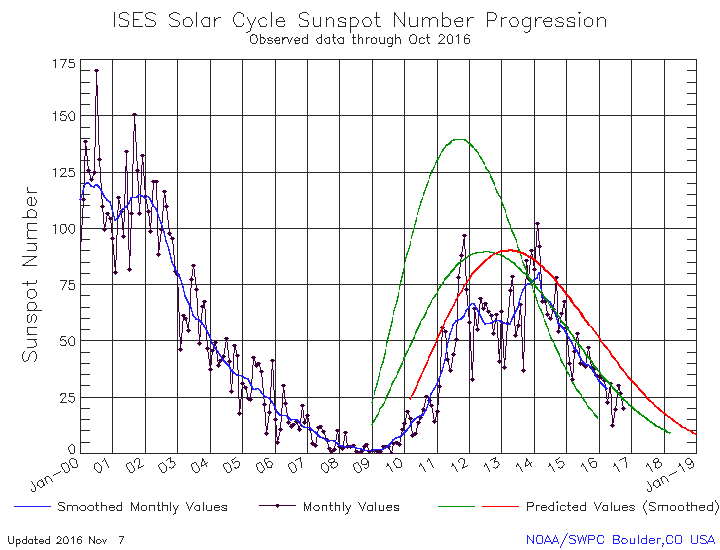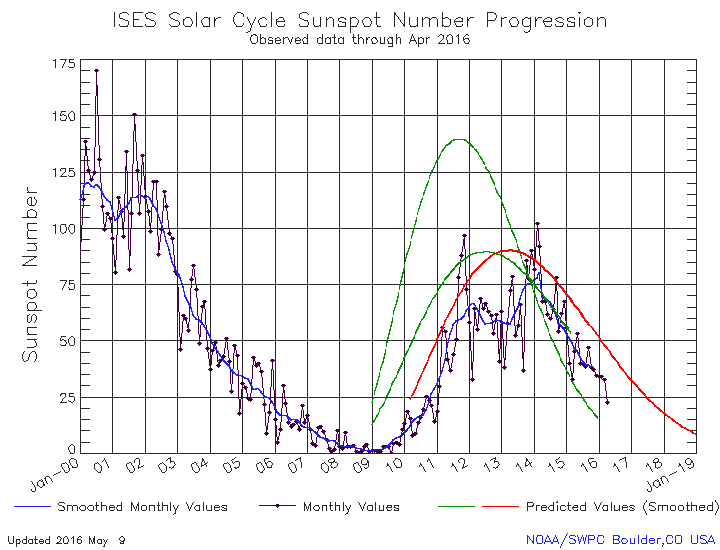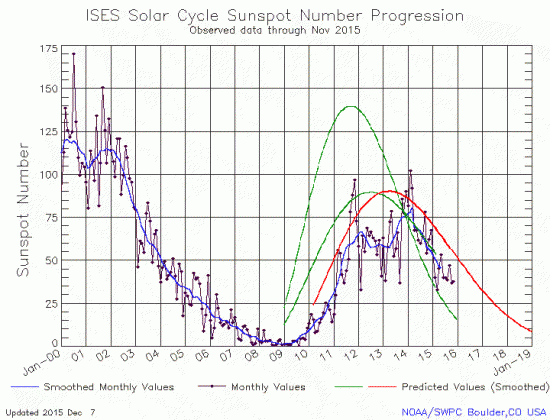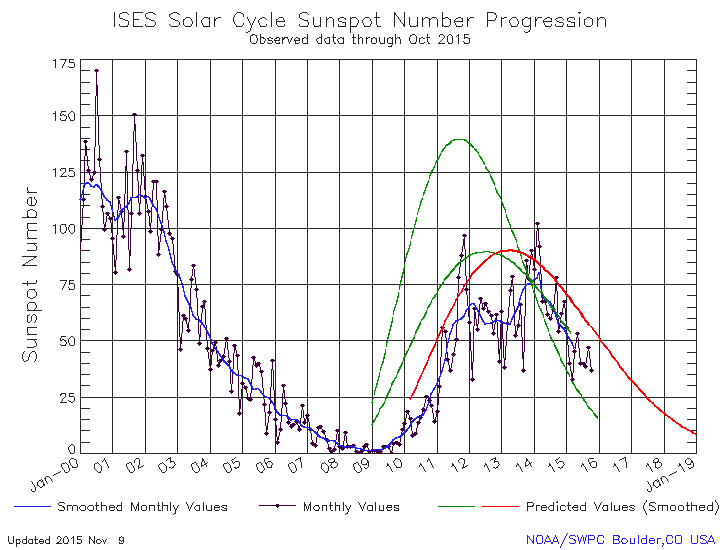Scientists: The solar cycle was only 8 years long during the Maunder Minimum in the 1600s
Using archival records gathered in Korea during the 1600s when the Sun was undergoing a long period of almost no sunspots — called the Maunder Minimum — scientists have discovered evidence that the solar cycle during that time was only 8 years long.
You can read their paper here. Since almost no sunspots were visible at that time, the scientists used reports of aurora in Korea to determine periods when the Sun was more active. From their abstract:
By analyzing the variations in solar activity-related equatorial auroras recorded in Korean historical books in the vicinity of a low-intensity paleo-West Pacific geomagnetic anomaly, we find clear evidence of an 8-year solar cycle rather than the normal 11-year cycle during the Maunder Minimum.
This 8-year cycle is shorter than the 9-year cycle that other researchers had estimated based on the few sunspots that did appear during this grand minimum. Both conclusions however challenge what is known of the Sun. Since the 11-year cycle resumed in the 1700s, short cycles have generally been associated with very active periods, the opposite of what has been found during Maunder.
In other words, we know better what happened, but have no understanding of why. Since the Maunder Minimum appears associated with the Little Ice Age of the 1600s, and fits other data that says the climate cools when the Sun produces few sunspots, gaining some understanding of this process is important for understanding past and future changes to the global climate.
Using archival records gathered in Korea during the 1600s when the Sun was undergoing a long period of almost no sunspots — called the Maunder Minimum — scientists have discovered evidence that the solar cycle during that time was only 8 years long.
You can read their paper here. Since almost no sunspots were visible at that time, the scientists used reports of aurora in Korea to determine periods when the Sun was more active. From their abstract:
By analyzing the variations in solar activity-related equatorial auroras recorded in Korean historical books in the vicinity of a low-intensity paleo-West Pacific geomagnetic anomaly, we find clear evidence of an 8-year solar cycle rather than the normal 11-year cycle during the Maunder Minimum.
This 8-year cycle is shorter than the 9-year cycle that other researchers had estimated based on the few sunspots that did appear during this grand minimum. Both conclusions however challenge what is known of the Sun. Since the 11-year cycle resumed in the 1700s, short cycles have generally been associated with very active periods, the opposite of what has been found during Maunder.
In other words, we know better what happened, but have no understanding of why. Since the Maunder Minimum appears associated with the Little Ice Age of the 1600s, and fits other data that says the climate cools when the Sun produces few sunspots, gaining some understanding of this process is important for understanding past and future changes to the global climate.


